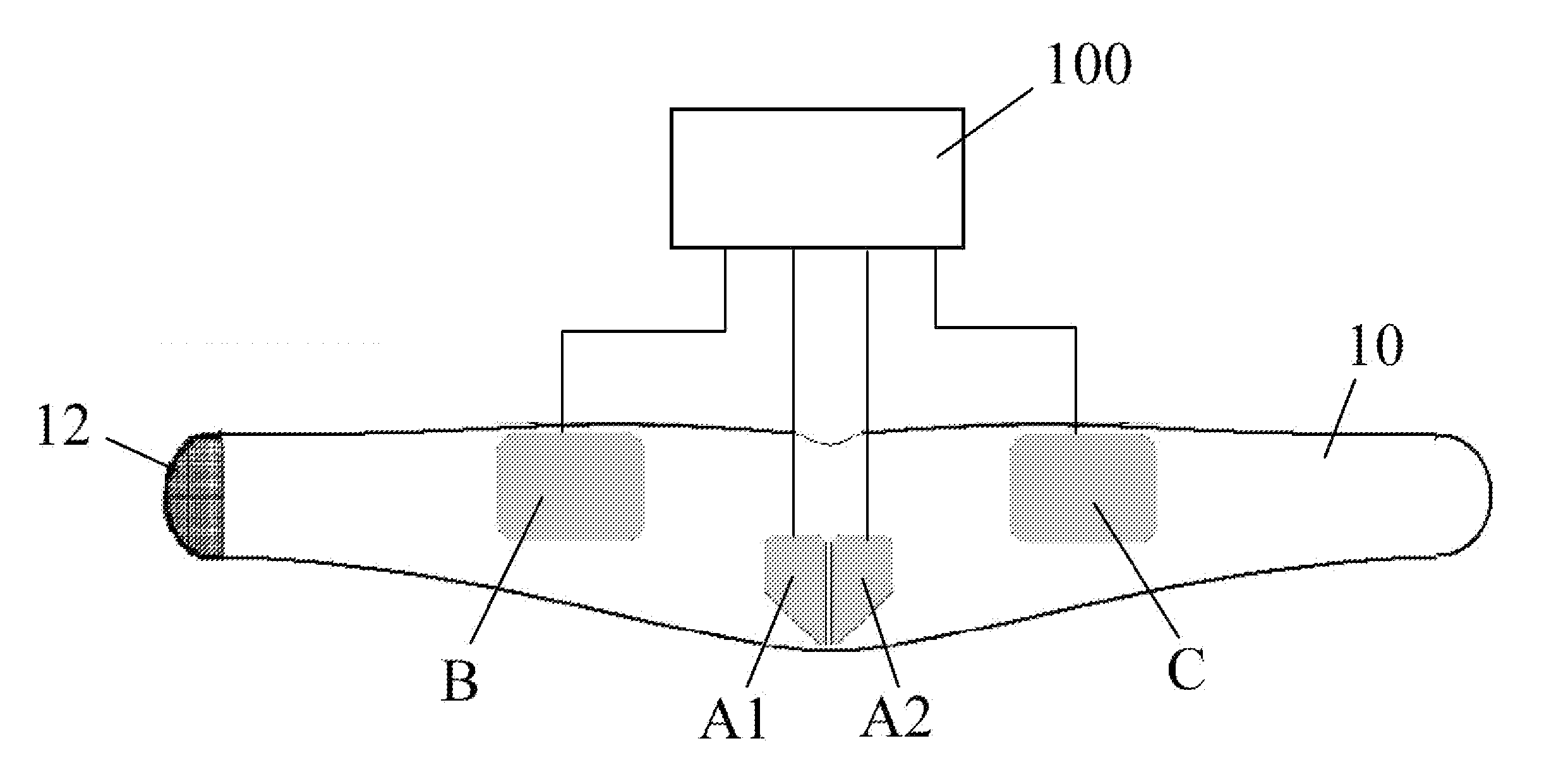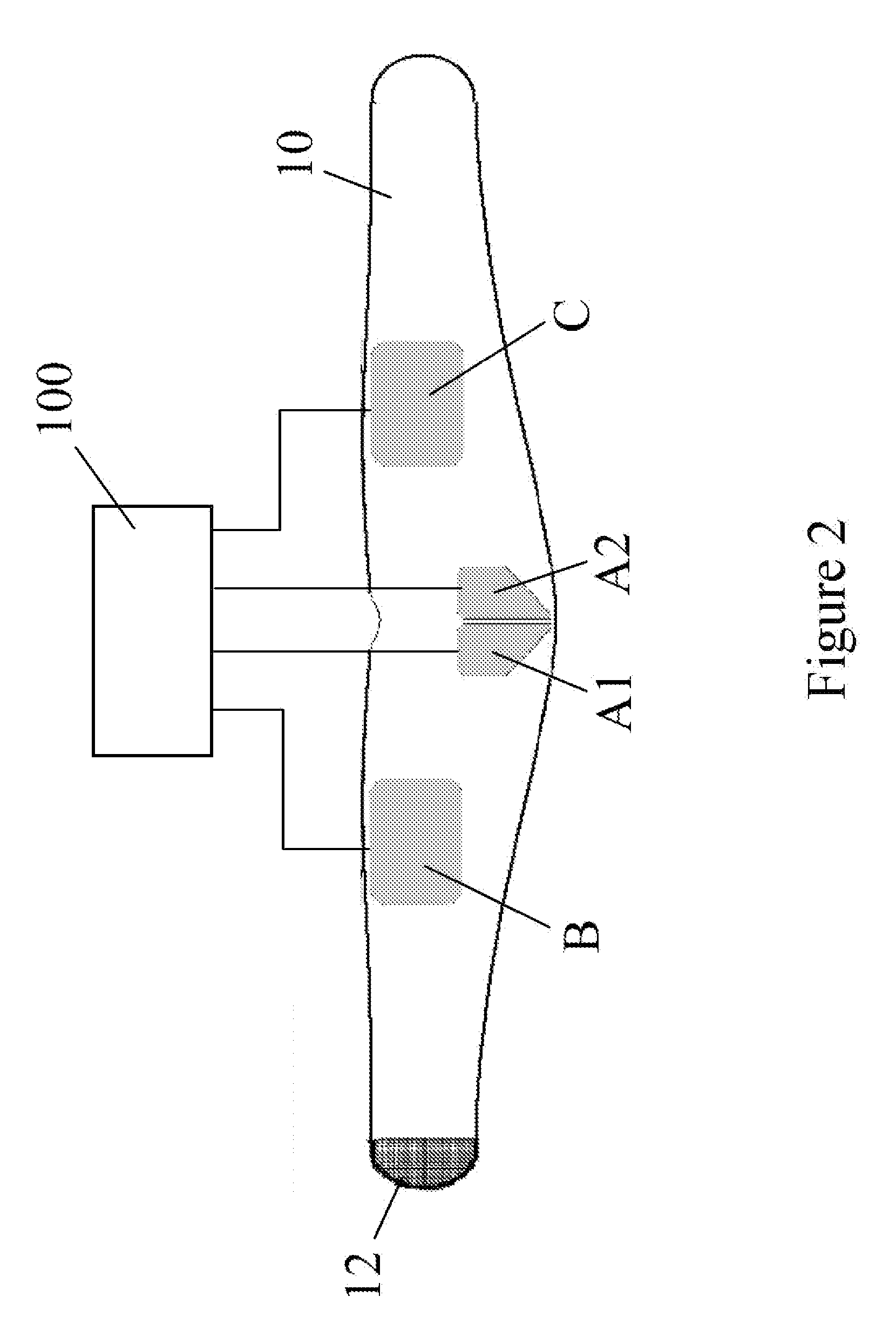Method and apparatus for stimulating the lower back and abdominal muscles
a technology for abdominal muscles and lower back, applied in the field of lower back and abdominal muscles stimulation, can solve the problems of inability of patients to voluntarily control specific muscles and appropriately perform rehabilitation exercises, inability to comply with exercise regimes, and inability to inhibit muscle activity
- Summary
- Abstract
- Description
- Claims
- Application Information
AI Technical Summary
Problems solved by technology
Method used
Image
Examples
Embodiment Construction
[0024]Referring to FIG. 1, in the embodiment a method of stimulating the lower back and abdominal muscles in a patient comprises applying a set of large-area electrodes A to C externally to the patient's body in the lumbar region. The electrodes are disposed on the patient's skin at least approximately symmetrically relative to the patient's midline (dashed vertical line in FIG. 1(c), which also represents the spine).
[0025]Electrode A, comprising two mutually insulated segments A1 and A2, is positioned on the lower back. Electrodes B and C are positioned on the right and left sides respectively. Electrode segments A1 and A2 each have an approximate length of 10 cm, an approximate width of 5 cm, and an approximate area of 25 cm2. Electrodes B and C are rectangular and each is approximately 180 cm2 in area (each has approximate dimensions 12 cm×15 cm). Each of electrodes B and C has an area approximately 3-4 times the area of the electrode A (i.e. the combined area of segments A1 and ...
PUM
 Login to View More
Login to View More Abstract
Description
Claims
Application Information
 Login to View More
Login to View More - R&D
- Intellectual Property
- Life Sciences
- Materials
- Tech Scout
- Unparalleled Data Quality
- Higher Quality Content
- 60% Fewer Hallucinations
Browse by: Latest US Patents, China's latest patents, Technical Efficacy Thesaurus, Application Domain, Technology Topic, Popular Technical Reports.
© 2025 PatSnap. All rights reserved.Legal|Privacy policy|Modern Slavery Act Transparency Statement|Sitemap|About US| Contact US: help@patsnap.com



